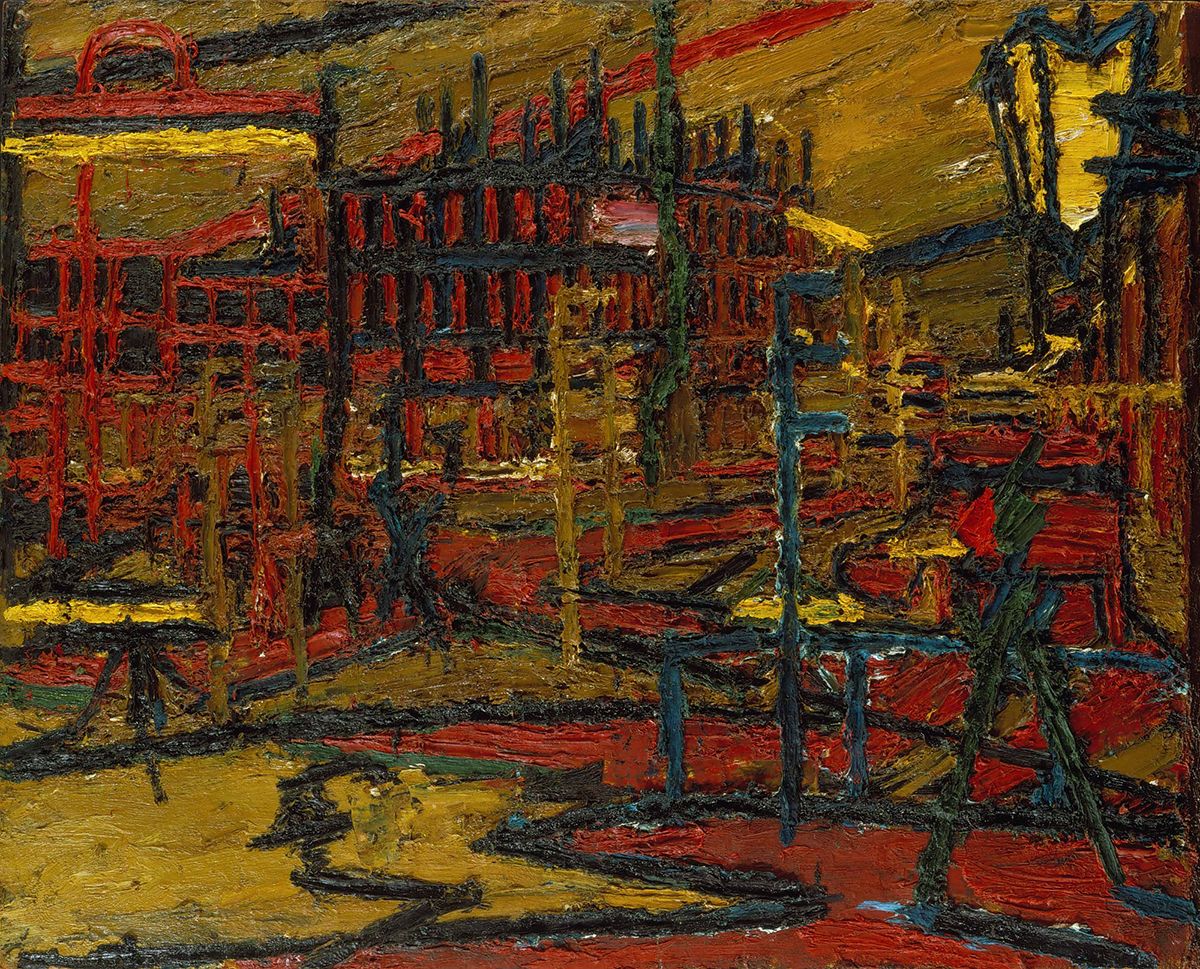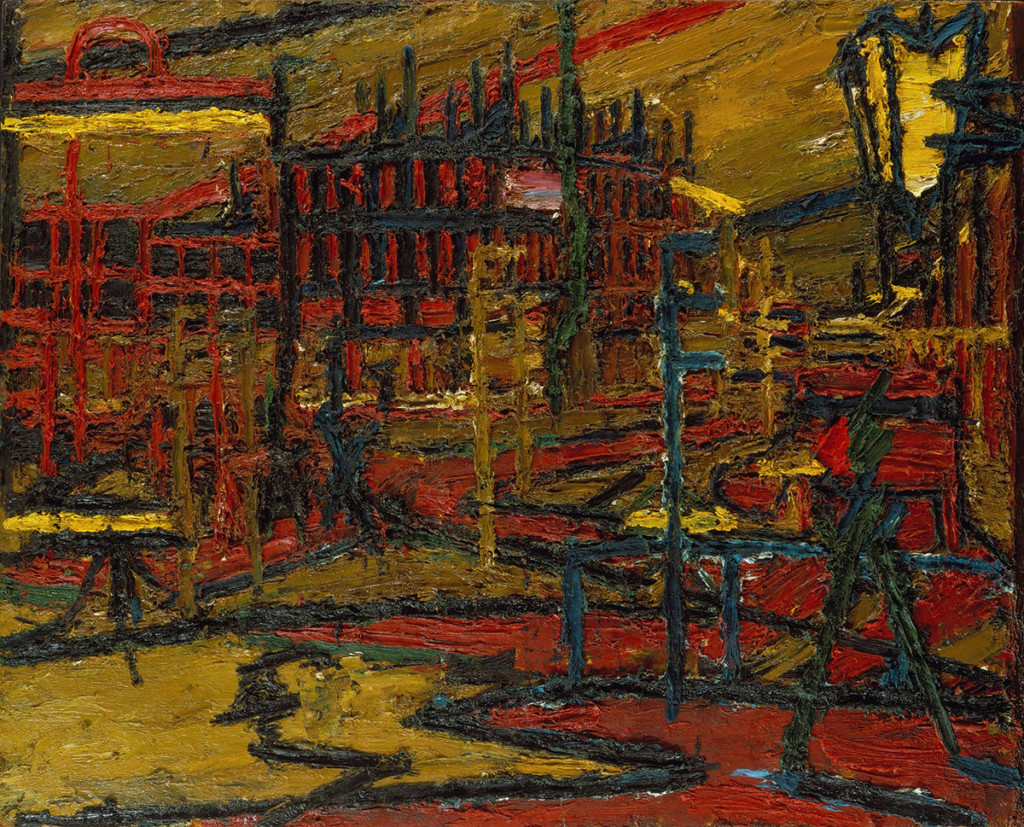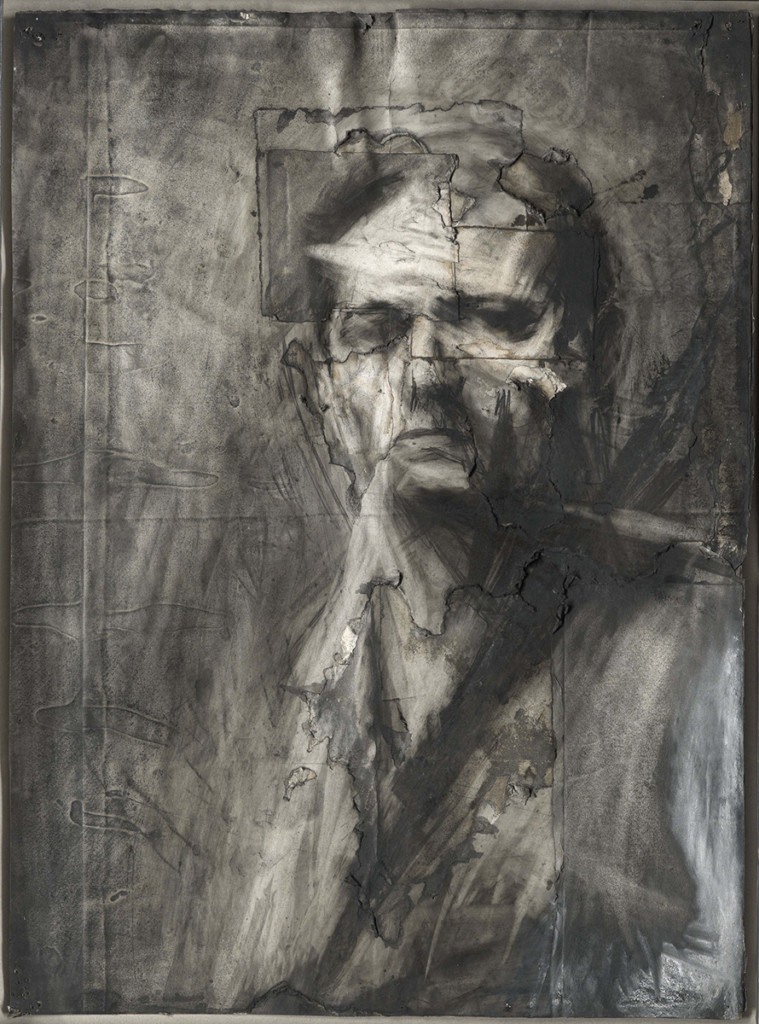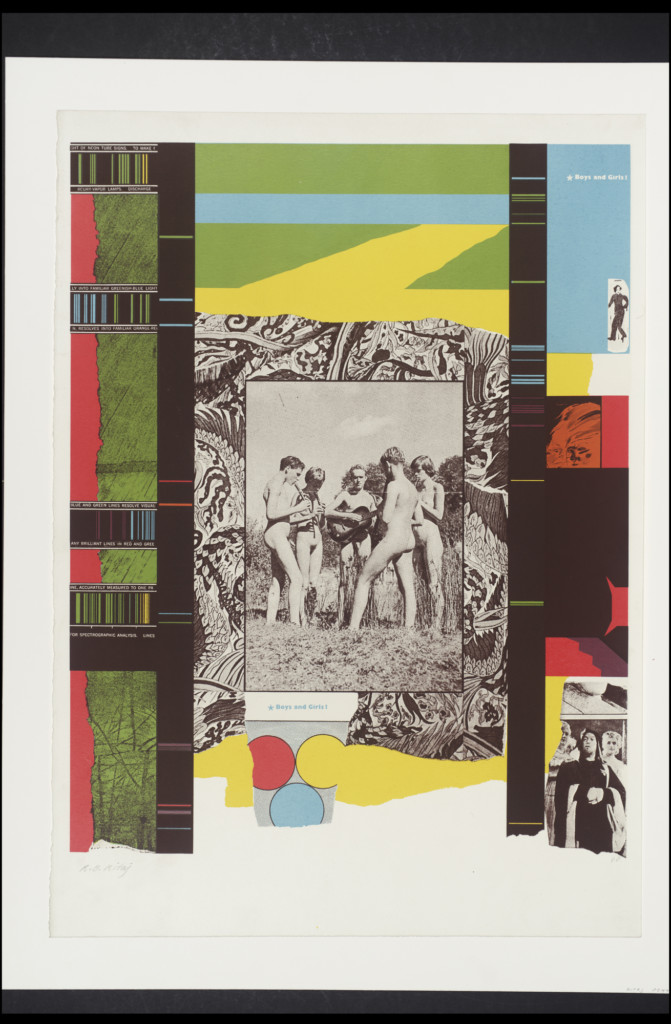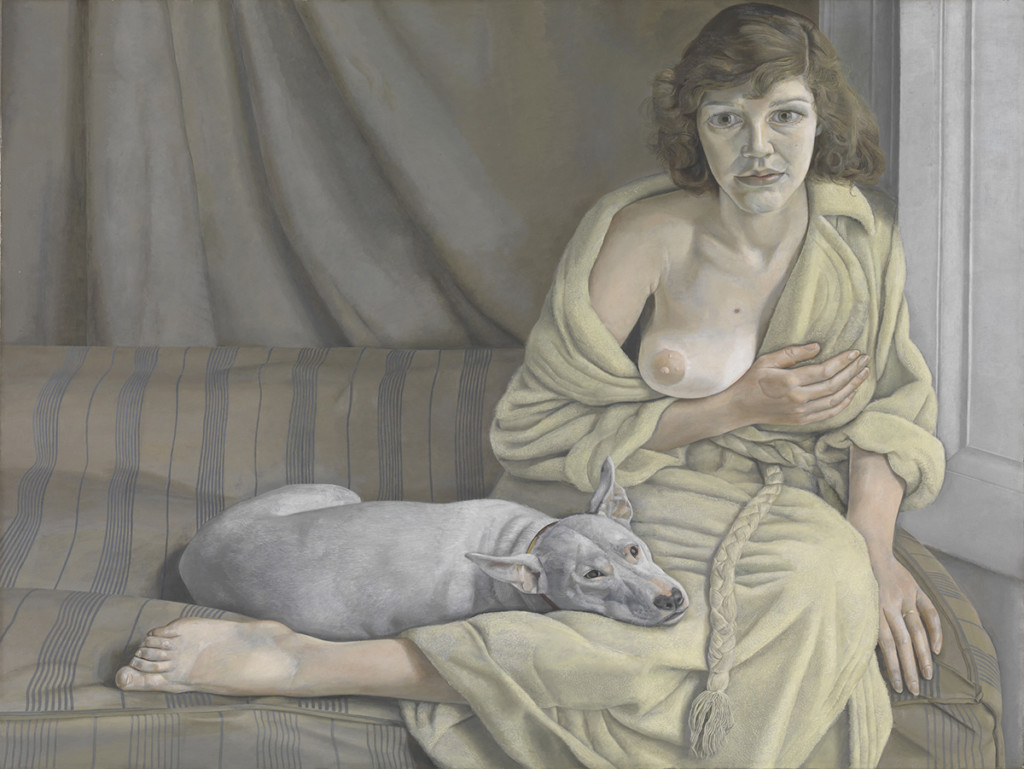The London School Continues Rattling the Cage
Words by Katrina Mohn, Arts Writer, Bermudez Projects
Appropriately enough, similar resistance came from the artists of the “London School” themselves; though coined by one of the members, R.B. Kitaj, other artists shrugged off the title, assuming their work was so different they couldn’t be grouped into a “school.” The knee-jerk reaction to labels kept many of them from buying into the idea that they were, in fact, a school.
Along with presenting the core members of this group, the exhibition gives a glimpse into what came after the paintings collected by the Getty, whose own collection of European paintings and drawings ends at the beginning of the 1900s. This show is built primarily of works from the Tate’s permanent collection, with gaps here and there filled by private loans.
The structure of the exhibition does the concept justice with impeccable pacing. Instead of forcing work into a chronological or thematic order, each selected artist is given his own space for what amounts to a mini-retrospective.
The first gallery is dedicated to Michael Andrews whose style varies more than any other artist in the show. However, from the flatly geometric landscape Lights IV: The Pier and the Road, 1973 to the flooded, mixed-media Thames Painting, The Estuary (1994 – 1995), Andrews marries photography as influence and paint as soul in his work. Even in a work based from a single photograph from the artist’s life, splashes and reflections are rendered by paint splashed directly onto the canvas.
The galleries of Frank Auerbach and Leon Kossoff give the strongest sense of cohesion within the “school”. Their paint is thick, messy, purposeful and bodily without focusing on actual flesh in the way artists later in the show do. Oil paint oozes from the canvas, visually breaking apart as soon as a viewer draws too close, reassembling as composition with a few steps back.
R.B Kitaj may be the most “London School” of them all. Just before the gallery of drawings, a survey of his work appears and it seems far more related to Pop Art than any of the other works included throughout the rest of exhibit.
The drawings in the smaller, darker gallery range from completed works to preparatory drawings giving further context to the larger, completed paintings. The quieter, smaller space gives visitors a moment before experiencing the final two galleries of the show.
From this oasis, visitors are pulled into the final two spaces of Francis Bacon and Lucien Freud. Immediately, the viewer is confronted with the Bacon’s Triptych August 1972, a jarring introduction to the grueling, emotionally wrenching paintings of his and Freud.
Further on, Lucien Freud’s monumental Leigh under the Skylight (1994) stands guard over the exit from the show. Though it is often said about paintings, photographs cannot do the paintings justice. Each elbow, knee, crook of the arm and facial feature is built, textured, reworked and given a life of its own.
Although they occupy the final galleries, there is no museum fatigue by the end of the exhibition space. The show ends with a giant, fleshed exclamation point. Handling of paint? Check. A final, bold statement of the “London School” – flesh within paint, paint itself turning into a kind of flesh.
Credits:
Frank Auerbach, Mornington Crescent with the Statue of Sickert’s Father Father-in-Law, 1966. Oil on masonite attached to auxiliary wooden framework. Courtesy of the Daniel Katz Family Trust, London. © Frank Auerbach, courtesy Marlborough Fine Art
Frank Auerbach, Self-Portrait, 1958. Charcoal and paper collage. Courtesy of the Daniel Katz Gallery, London. © Frank Auerbach, courtesy Marlborough Fine Art
Francis Bacon, Triptych August 1972, 1972. Oil and sand on three canvases. Tate: Purchased 1980. © The Estate of Francis Bacon. All rights reserved. / DACS, London / ARS, NY 2016. Photo © Tate, London 2016
Lucien Freud, Girl with a White Dog, 1950–1951. Oil on canvas. Tate: Purchased 1952. Photo © Tate, London 2016
R. B. Kitaj, The Wedding, 1989–1993. Oil on canvas. Tate: Presented by the artist 1993. © R.B. Kitaj Estate, courtesy Marlborough Fine Art. Photo © Tate, London 2016
R. B. Kitaj, Boys and Girls!, 1964. Screen print on paper. Tate: Presented by Rose and Chris Prater through the Institute of
Contemporary Prints 1975. © R.B. Kitaj Estate, courtesy Marlborough Fine Art. Photo © Tate, London 2016


